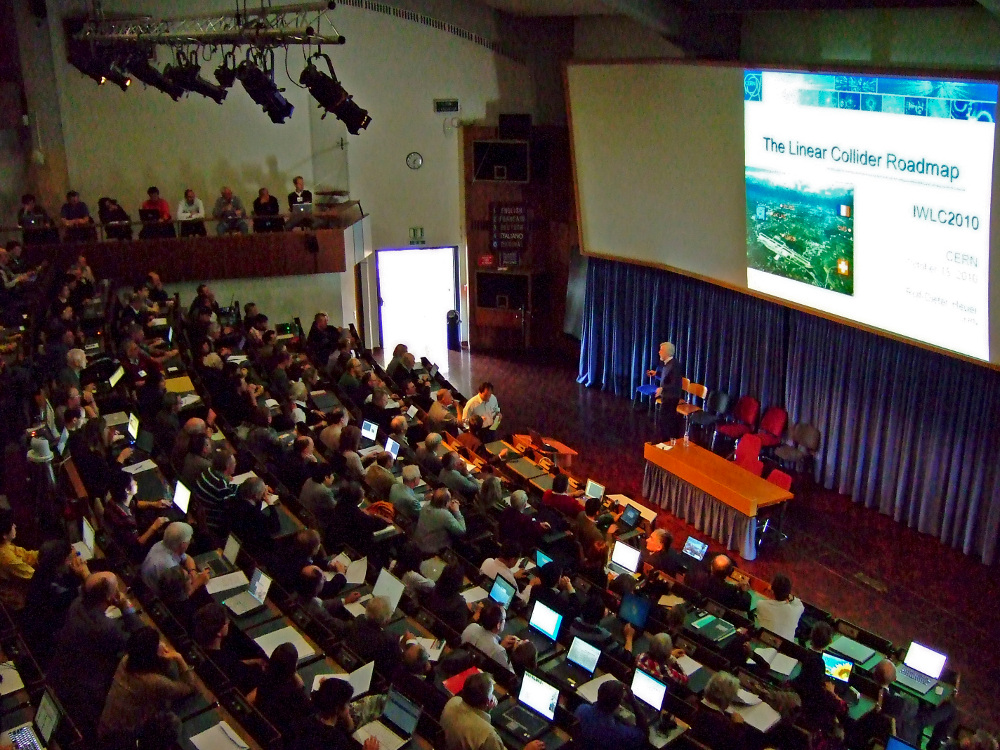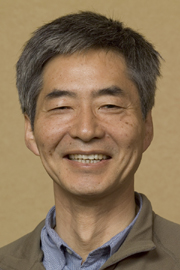Director's Corner
24 November 2010
The ILC-CLIC collaboration and technological challenges
Today's issue features a Director's Corner from Kaoru Yokoya, Global Design Effort Asian Regional Director.
In recent years, the collaboration between the ILC and CLIC communities has developed and evolved, and Barry Barish has reported on this collaboration in previous corners. Working groups on many R&D areas have been formed. Recently the Accelerator General Issues Group, which takes care of project strategy and planning, and the Detector Group have also formed. Last month in Geneva, we held our first ILC-CLIC joint meeting (IWLC10), as Peter Garbincius reported. ILC and CLIC are quite different in their ultimate target energies and in their fundamental acceleration mechanisms. Nonetheless, as electron-positron linear colliders they have many technological common areas. Under the tough situation of limited resources around the world, this collaboration is welcome and, actually, we have been producing good results.
Nevertheless, I feel it necessary to point out some issues within the collaboration. We are now in the second technical design phase, gradually shifting the focus from broader R&D problems to detailed technical and engineering designs, mass-production studies, and cost reduction. Meanwhile, scientists still need to demonstrate the feasibility of some CLIC technologies. Under these circumstances it is very natural that the collaboration energies should be directed more to CLIC R&D. In addition, the CLIC community is getting ready to publish their Conceptual Design Report (CDR) next year, and many ILC scientists are busy helping them with this document.
 CERN's DG Rolf Heuer presenting the Linear Collider roadmap during the ILC-CLIC meeting at CERN in November 2010. Image: Nobu Toge CERN's DG Rolf Heuer presenting the Linear Collider roadmap during the ILC-CLIC meeting at CERN in November 2010. Image: Nobu Toge |
The particle physics community is in agreement that the linear collider energy range and timeline depends on initial results from the Large Hadron Collider (LHC) at CERN. We expect to obtain those data from the LHC some time around 2014. The seven-teraelectronvolt operation of the LHC, which began last March, is going well and has been yielding valuable data at a much faster pace than expected. Rolf Heuer, the Director General of CERN, stated in his opening talk at IWLC10 that the LHC's operation schedule is flexible so that researchers can obtain useful data as early as possible. It is truly exciting news.
In creating a plan for the future, data from the LHC is essential. However, the consideration of the maturity of accelerator technology is indispensable. The GDE is getting ready for the project to start when we publish the Technical Design Report in 2012. Realistically, we will need extra years to have a detailed final design with an industrialisation plan. The timeline of technological completion for CLIC, for which the CDR will be published next year, is far less certain than that for the ILC. We will have to hold a fair assessment as to when the technologies will be ready. Such an assessment should eventually be performed by an upper organisation such as ICFA. However, those who actually have best knowledge on the technology status are the scientists and engineers in the ILC and CLIC communities. I think we will need a framework similar to the ILC Technical Review Committee (ILC-TRC) to realise that process.
In 2004, ICFA formed the International Technology Recommendation Panel (ITRP) to evaluate two accelerating technologies, superconducting technology and normal conducting technology, and to recommend a single choice on which to base the linear collider. ITRP was an independent third party composed of those who do not have direct relationships with linear collider R&D. However, they made a decision to employ superconducting technology in a short period of eight months. I think one of the factors that made their quick decision possible was the TRC report.
The ILC Technical Review Committee was formed by ICFA in 2001 (the first TRC formed in 1994) to assess the technical status of existing four electron-positron linear collider projects: TESLA, C-band Collider, X-band Collider, and CLIC. The essential part of this committee, chaired by Greg Loew of the Stanford Linear Accelerator Center, was composed of proponents for each project. Accordingly, decision-making was not the mission of the committee, since members were those who knew about each design best and so most closely attached to the projects. Naturally, severe discussions took place, and there were sometimes emotional confrontations. Nevertheless it was a valuable experience to conduct a scientific discussion even in a rivalry situation. TRC published the over-500-page report in 2003. It summarised the status of individual technologies and listed the remaining development works for the future.
Our current mutual understanding of ILC-CLIC status, I think, is significantly better than it was in 2001, owing to the ongoing collaboration. It is possible to share a common understanding of its present technological status and prospects for future developments, and this is definitely necessary for constructing the future plan of high-energy physics.
-- Kaoru Yokoya
